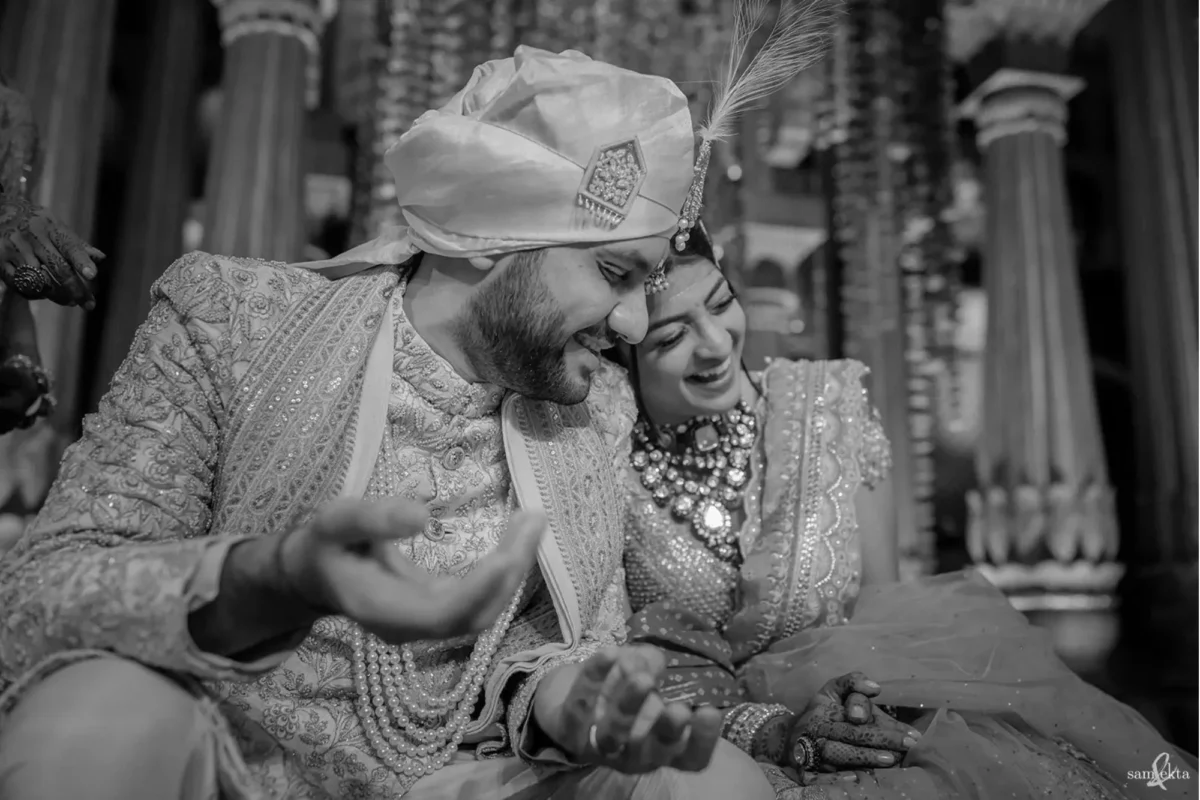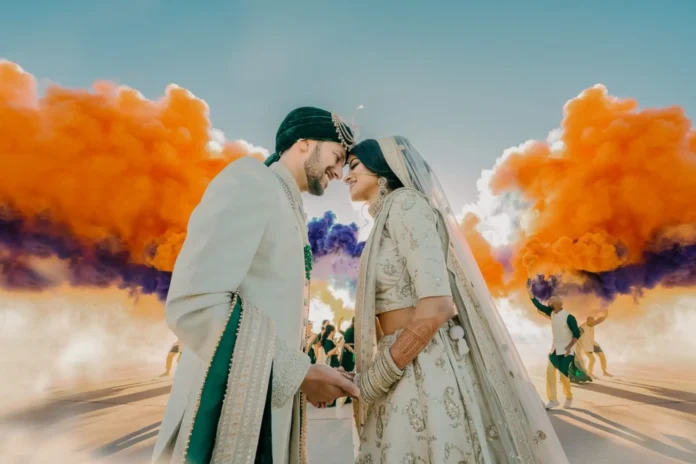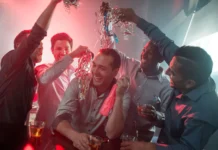Indian weddings have always been visual feasts, brimming with emotion and spectacle. Let’s explore how the influence of AI and AR is evolving the wedding photography landscape.
Something fundamental has shifted in how these moments are captured and preserved. Walk into any wedding venue today, and alongside traditional photographers with DSLRs, you’ll find professionals wielding technology that would have seemed like science fiction just five years ago. Artificial intelligence and augmented reality aren’t just buzzwords anymore—they’re revolutionising how we document love stories.
Table of Contents:
- The New Wedding Photographers: Part Artist, Part Technologist
- The Authenticity Equation: Where to Draw the Line
- AI in Operation: The Technical Revolution
- Augmented Reality: Living Photos and Interactive Memories
- The Drone Revolution: AI-Stabilized Aerial Storytelling
- Real-Time Editing: Demand of the Instagram Era
The New Wedding Photographers: Part Artist, Part Technologist

AI-powered editing suites, AR visualisation tools, and real-time enhancement software that changes how weddings are captured and experienced. The wedding photography landscape has completely changed. Five years ago, a team would spend weeks after shooting the wedding to deliver a desired final product. Now, couples expect near-instant gratification for social media posts during the sangeet, teaser videos by the reception’s end, and AR filters they can share with guests in real-time. The technology has made all of this possible, but it’s also raised profound questions about what we’re actually doing.
Read Also: Mini Food Bites You Should Have in Your Wedding Menu
The Authenticity Equation: Where to Draw the Line

But where we draw the line between using AI to enhance a moment and taking away from its authenticity, The answer is simple: If AI changes the memory, don’t do it. It’s that simple. Use AI to improve technical quality like sharpening an image, balancing exposure, removing sensor dust but never to fabricate or fundamentally alter what happened.
Like, don’t AI-generate a smile that wasn’t there, change the colour of an outfit, or erase a family member from a frame. Indian weddings are emotional, imperfect, and real. These little details are what make them worth documenting. And this philosophy guides the whole approach of wedding photographers. If a couple looks tired during the reception because it’s 2 AM and they’ve been celebrating for six hours, that’s part of their story, Their job is to make them look their best, not make them look like someone else.
This gets increasingly important with the expansion of AI capabilities. Today, it’s oh-so-easy to take people out of backgrounds, change facial expressions, or swap outfits with modern software that can even generate entirely synthetic images. The temptation exists to create these “perfect” moments, but professionals realize that perfection is not the goal; truth is.
AI in Operation: The Technical Revolution

But within those ethical boundaries, AI is doing some pretty remarkable things to wedding photography. Consider the volume of content generated at an Indian wedding. A typical three-day celebration might involve 50,000 to 100,000 photographs and hours of video footage. Manually sorting, editing, and curating this content would take months.
Enter AI-powered workflows. Machine learning algorithms that can identify key moments like the exchange of garlands, the emotional tears, the candid laughter by analysing composition, facial expressions, and even cultural markers specific to Indian ceremonies. The AI learns what matters. It flags the pheras, recognises when the bride is emotional, and identifies group shots with immediate family. What used to take days of manual sorting now happens in hours.
In the same vein, editing has also become so much more powerful. AI-assisted colour grading ensures consistency across a thousand images, learning the photographer’s style and applying it uniformly. Skin tone correction-something quite tricky considering the variation in Indian skin tones and all possible lighting conditions-is now done with remarkable accuracy by algorithms that have been trained on millions of images.
Low-light noise reduction-desirable for those romantic nighttime moments or dimly lit indoor ceremonies, improved exponentially. Modern AI can recover detail from shadow areas that would have gone to waste just a few years ago, all while looking natural and not revealing the technological intervention.
Augmented Reality: Living Photos and Interactive Memories

If AI is revolutionising the backend, augmented reality is transforming the front-end experience. Wedding Filmmakers no longer just creating passive albums and videos. They’re building interactive experiences that evolve how families engage with wedding memories.
Several AR applications are gaining traction among tech-savvy couples. Wedding invitations embedded with AR markers that, when scanned, display 3D animated versions of the couple or play their love story. Photo albums where certain images, when viewed through a smartphone app, spring to life with short video clips or audio messages from the couple.
Imagine looking at a picture of your grandparents at a marriage and you scan it, and you hear them speaking their blessings in their own voice. That’s the emotional power of AR-it adds dimensions to static memories without altering what actually happened.
With AR, weddings are allowing for first-time experiences during the events themselves. Personalised Instagram and Snapchat filters have been designed for each wedding, and allow guests to share in the moments with personalized overlays-floral frames matching the dér;cor, animated elements reflective of a wedding theme, or playful effects adding a little extra something to selfies.
Some are experimenting with AR previews-where a couple can visualize in real time, through tablets or AR glasses, how certain poses or compositions will look post-processing. It’s like having a preview button on life. Couples can make informed decisions about shots, and we waste less time on setups that won’t deliver the desired result.
The Drone Revolution: AI-Stabilised Aerial Storytelling
Drone photography is everywhere at the Indian wedding, but AI has turned it from novelty to necessity. Digital variants of the latest drones with AI stabilization, obstacle avoidance, and even autonomous subject tracking can get the sweeping aerial shots that add cinematic grandeur to wedding films. The baraatis entering the venue, the bride and groom walking down a festively decorated lawn, the extent of a destination wedding with a palace as the backdrop-drones capture these moments in a way that ground-based photography simply can’t.
But it’s the AI integration that makes these shots possible. Earlier, flying a drone required complete focus and skill. Now, AI handles the technical flying like maintaining altitude, avoiding obstacles, keeping the subject in frame while the operator focuses on composition and storytelling. Some drones can even recognize the couple and follow them autonomously, freeing up the operator to control camera angles and movements.
That means professional, cinematic footage is possible without the need for a huge crew or any Hollywood budgets. One good operator working with an AI-enhanced drone can shoot footage that would have previously necessitated cranes, jibs, or even helicopters.
Real-Time Editing: Demand of the Instagram Era
Perhaps nothing illustrates the industry’s transformation so much as the expectation for real-time content delivery. Ten years ago, couples waited weeks or months for wedding photos. Today, they want teaser content during the wedding itself. By the time the sangeet is over, we’ve edited a teaser and even put it up on social media. It has all become standard now, especially in high-profile weddings, as guests are influencers or celebrities who need immediate content to post.
Read Also: Birthday Special: Is Ishaan Khatter the New Age Heartthrob?
None of this would be possible without AI. Automated editing software is able to create rough cuts through algorithmic analysis of footage—picking out the best moments, editing rhythmically to match music, and colour-correcting at a basic level. Human editors go through these AI-created cuts, refining and adding creative flourishes to ensure emotional coherence.






